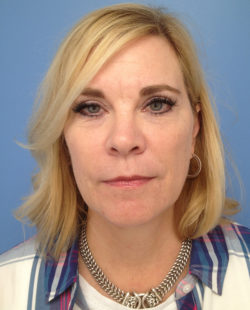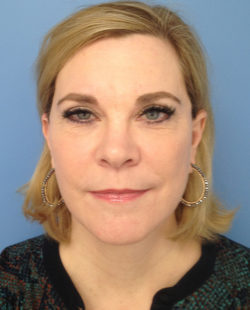Facelift
CONVENIENTLY LOCATED TO SERVE WASHINGTON, DC

Our plastic surgery facility in Washington, DC, is dedicated to helping patients look and feel their absolute best with advanced cosmetic services. Patients experiencing the early signs of aging such as wrinkles, fine lines, and loose, saggy skin can reclaim their youthful appearance with a facelift procedure.
What is a Facelift?
A facelift, or rhytidectomy, is a surgical procedure to improve visual signs of aging of the face and neck. As people age, the skin and muscles of the face region begin to lose tone. A facelift improves the sagging facial skin, jowls, and loose neck skin by lifting the soft tissues.
Dr. Olding is well-known internationally for his natural-looking facelifts and his ability to analyze each patient to provide an individualized rather than a “cookie-cutter” approach. He takes the time to discuss and evaluate your goals and allows adequate time for your questions, as his initial consults last usually one hour. He likes to review old photos of you from 10, 20, 30, 40, etc. years ago to evaluate the aging effects on your face and the skin, which bears the brunt of damage because of the ultraviolet light effects of sun exposure.
For some patients, it is appropriate to be performed in conjunction with other procedures, such as fat injections, a brow lift, or eyelid surgery. Dr. Olding will work with you to decide whether a facelift is the right surgical procedure for you. In some cases, non-surgical techniques may enable you to postpone your procedure for years.
I don’t look old and tired so I don’t feel old and tired
A week after my facelift I was working in the yard when two women walked by. They asked, “What happened to the lady who lived here?” I told them it was me – I’ve lived here for 35 years. One woman said, “Oh, it must have been your mother.” I have felt more energetic too. I don’t look old and tired so I don’t feel old and tired. Thank you Dr. Olding for changing my life at the age of 69!
Janice S.
IDEAL CANDIDATES FOR A FACELIFT
A facelift is highly recommended for patients with a sagging face and neck. It is also beneficial for patients with wrinkles around the nose and mouth. Patients who are experiencing volume loss in the cheeks and around the mouth are good candidates for a facelift surgery.
If you’re looking for longer-lasting results than you would achieve with non-surgical facial treatments, a facelift is an excellent option. Patients must have a positive outlook and realistic expectations.
Facelift candidates must be healthy with no medical conditions that affect healing. Non-smokers are ideal.
YOUR CONSULTATION
You will meet with Dr. Michael Olding for your consultation. The facelift consultation will start with a discussion about your goals and concerns. A review of your medical history and an evaluation of your face will allow Dr. Olding to determine if a facelift is right for you.
Dr. Olding will create a facelift plan based on your goals and his facial evaluation. He will discuss all the details of the plan with you. Relevant details will include pre-surgery instructions, surgery details, recovery directions, and a cost estimate. Feel free to ask any questions you may have during your consultation.
What to Expect During the Facelift Procedure
A facelift surgery can last several hours. The exact duration will depend on the details of the surgical plan. Surgery is performed in most cases on an “in-and-out surgery” basis, and in most cases, the patient breathes “on their own” without the use of an endotracheal tube (a tube that passes below the vocal cords).
The “lift” of the face and neck is just that. A thin layer of tissue beneath the skin and fat called the “SMAS” is elevated up (rather than pulled back). The skin, muscles, and other tissue essentially “come along for the ride.” This creates a more “natural,” not artificial look because there is no tension on the skin.
The skin is then re-draped and “cut along the dotted lines” under no tension, and therefore the scar is almost invisible. Because this deeper tissue (the SMAS) is not exposed to the harmful ill-effects of the sun, the result lasts much longer than any tension applied to the skin (which has lost elasticity due to the sun and aging).

After the Facelift Procedure
Dr. Olding will release the patient once their condition has stabilized. He will provide the patient with instructions for a safe and smooth recovery. Patients either spend the night at their own home or a local hotel. Arrangements are made in advance for out-of-town and international patients. Someone must spend the first night with the patient. That individual can be a nurse arranged through our office, or a responsible family member or friend. All facelift patients are seen the next day when the dressings are removed as well as any drains. Patients begin showering the next day, and suture removal starts the next office visit.
Most patients can socialize comfortably after 2 to 3 weeks, but that varies greatly depending upon how easily you bruise.
Dr. Olding asks that you not increase your heart rate or blood pressure (which increases bruising and prolongs the recovery period and possible bleeding) for two weeks postoperatively. That means no working out for two weeks!
Results typically last 7-10 years.
Patients experience temporary bruising, swelling, numbness, and skin dryness or tenderness. Potential complications include nerve injury (which is usually temporary), infection, bleeding, scarring, asymmetry or change in hairline, skin loss, or hair loss.
For patients interested in cosmetic facial surgery relating to aging, please bring with you any photos of yourself 5, 10, 15, or 20 years past, so Dr. Olding may see the changes in your face. Please also look at the list of all medications and supplements you may not take 2 weeks before your surgery.
Facelift Cost
The cost of a facelift will depend on several factors. The price can be affected by body type, type of technique performed, surgical complications, and even allergies. Find out more by scheduling a consultation.
Contact Our Office
If you’re interested in learning more about the facelift procedure in our Washington, DC, plastic surgery facility, contact our office to schedule an informative consultation with Dr. Michael Olding today.


